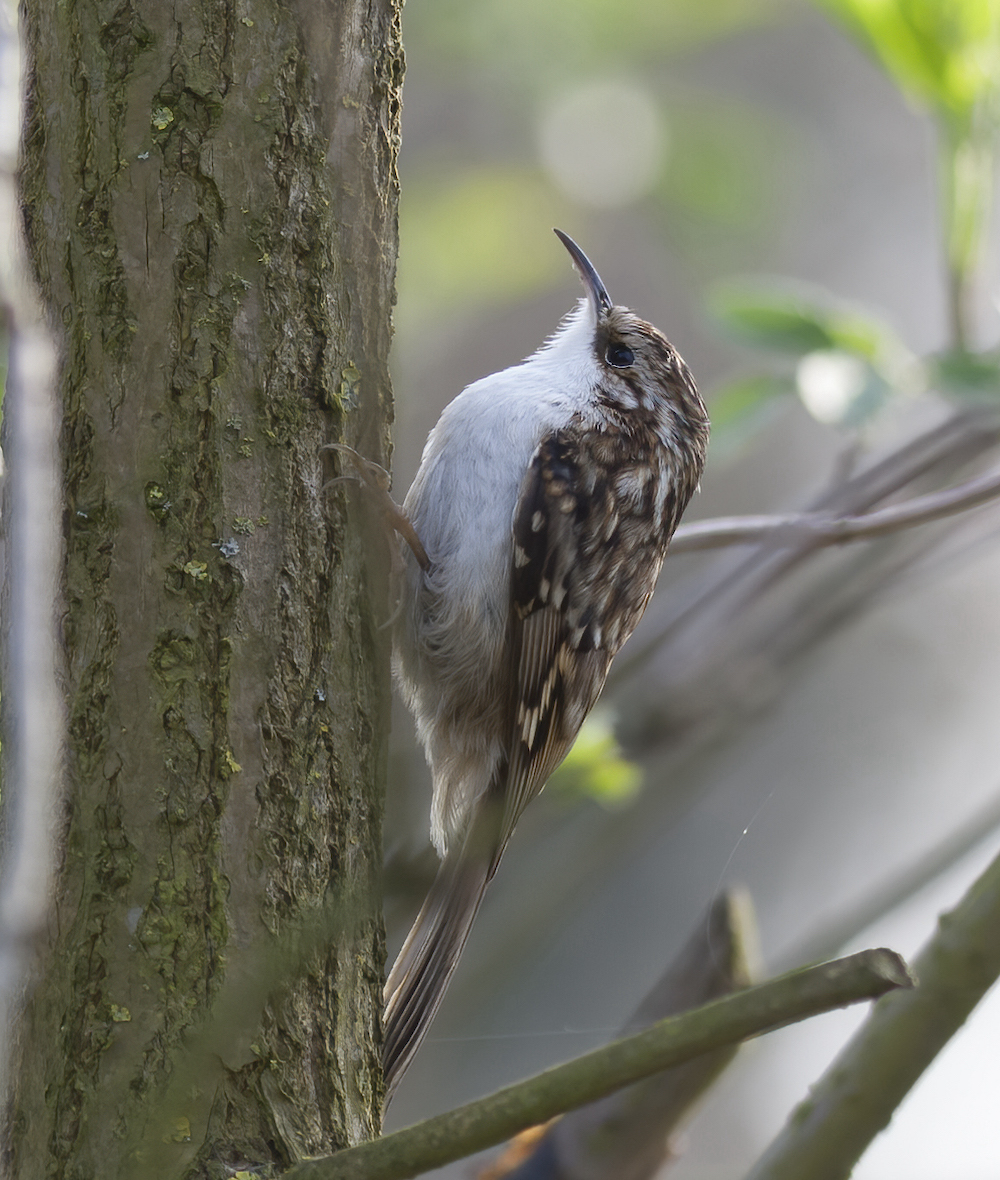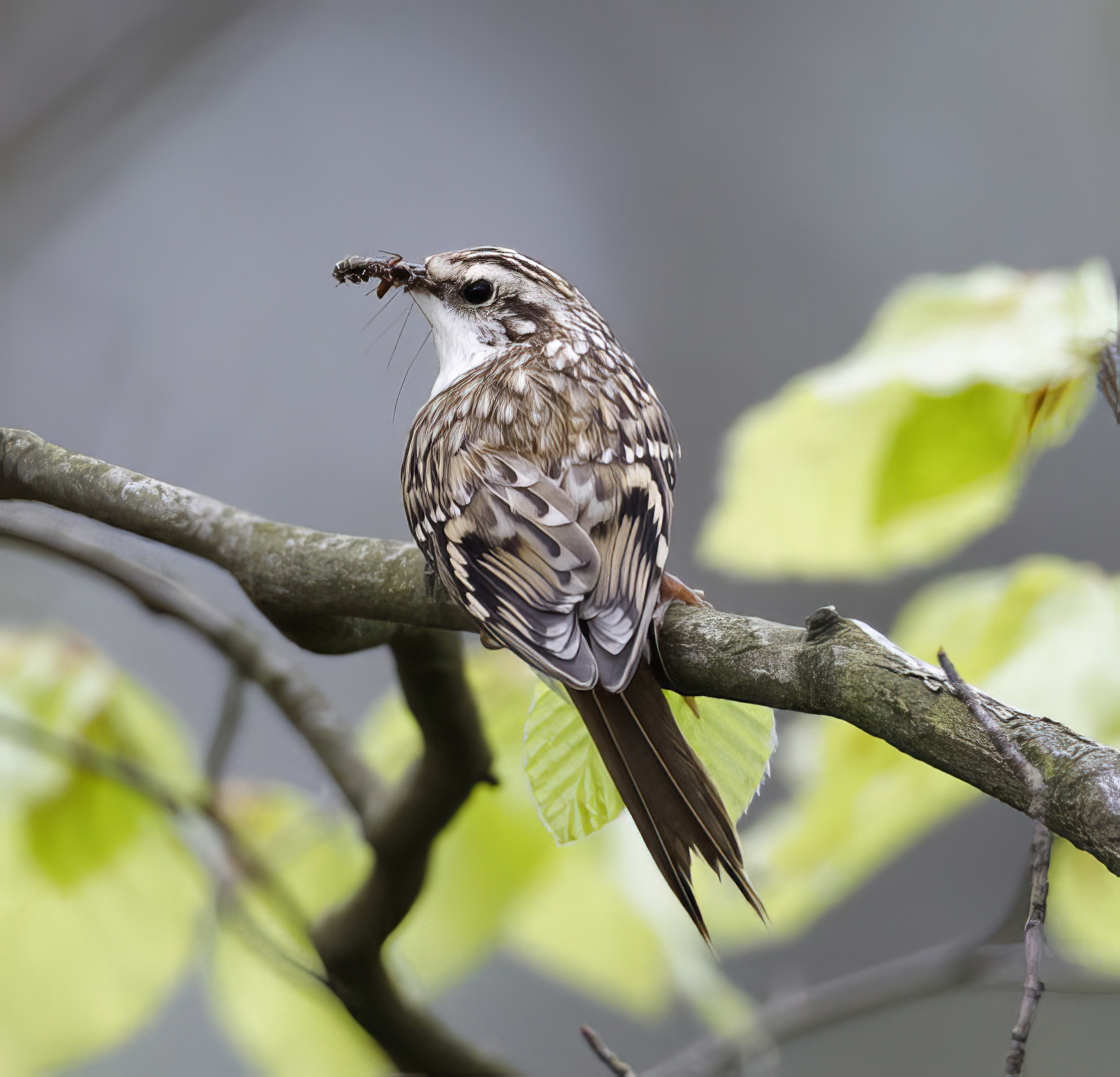Treecreeper Certhia familiaris
British form britannica a common resident and partial migrant. Nominate familiaris of Scandinavian and eastern European form, vagrant (see next page).


Fairly widespread as a breeder but like many small woodland birds in Lincolnshire it is not as numerous as one might expect. The Atlas estimated only 2,000 pairs in the 1980s.The BTO Atlas 2007-11 showed it absent from the Fens and scarce in the Central Vale and Marsh. APEP4 put the adjusted 2016 population at 2,500 pairs and the long-term BBS trend for England shows it up 8% from 1994-2019. There are no significant movements recorded by ringing activities, but an adult ringed in March 2012 has subsequently been retrapped at the same site in four of the years up to May 2017, when it was at least five years old. This pattern of site fidelity and longevity (for a small bird) is repeated across the UK, and the current longevity record (BTO data) is eight years and eight months. There are no records of foreign-ringed birds trapped in the UK, nor of UK-ringed birds retrapped abroad. Records of the nominate race familiaris are exceptional and only liable to be accepted by BBRC given very good photographs (see next webpage).
(Account as per new Birds of Lincolnshire (2021), included December 2022)
